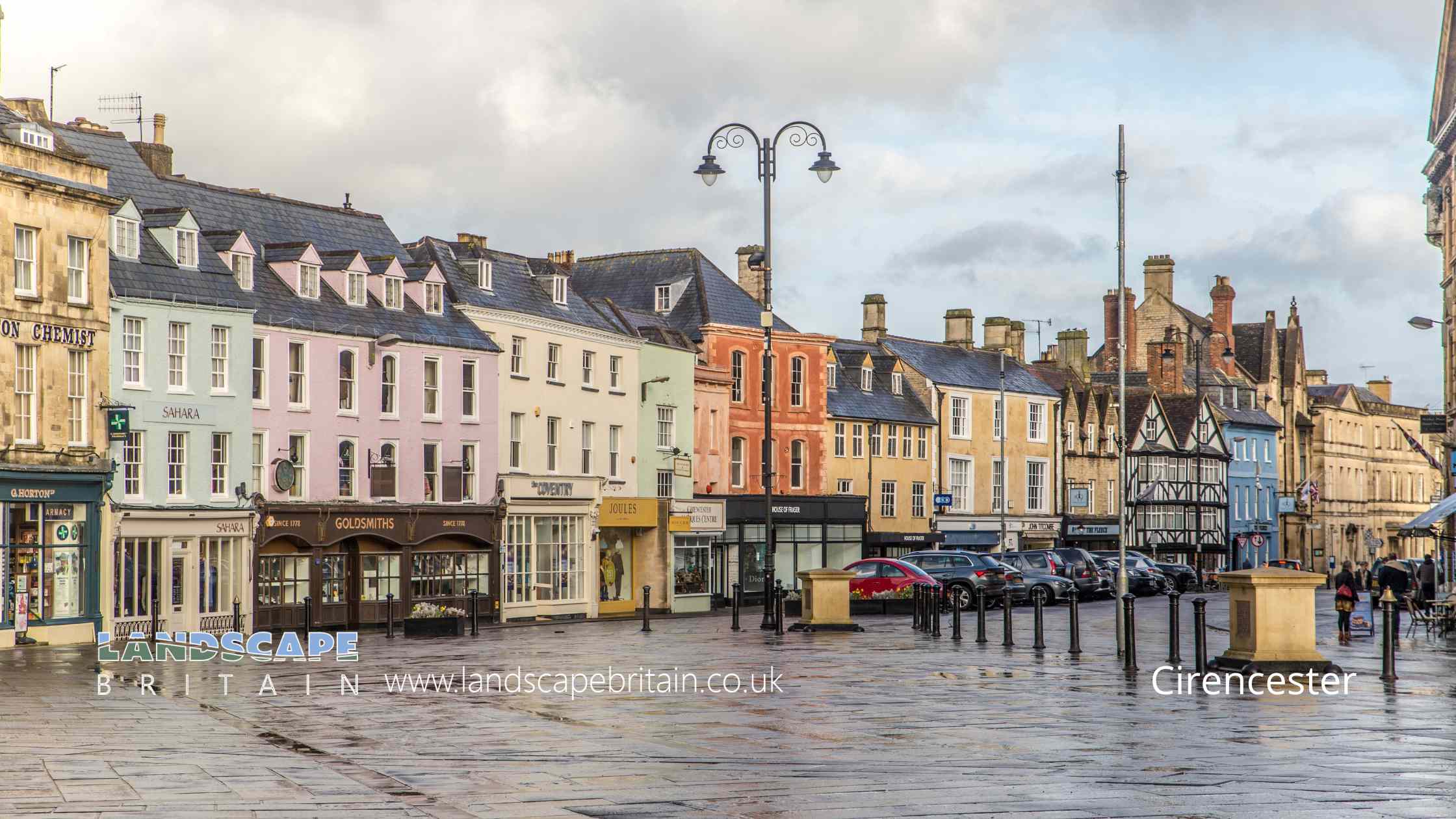
Cirencester
Cirencester
Cirencester, often referred to as the “Capital of the Cotswolds,” is a market town rich in history and architectural beauty, nestled in the heart of the Cotswolds, a rural area of England known for its picturesque landscapes and quaint villages. The town’s history dates back to the Roman era when it was known as Corinium Dobunnorum, one of the most significant Roman towns in Britain after London. This rich history is still visible today, particularly in the Corinium Museum, which houses one of the largest collections of Roman artifacts in the UK.
The town’s layout reflects its Roman heritage, with streets radiating from its central market square, which has been a hub of activity for centuries. The Church of St. John the Baptist, a fine example of Perpendicular Gothic architecture, dominates the market square. Its large, fan-vaulted porch and impressive tower are notable features, making it a focal point for both locals and visitors.
Cirencester’s significance continued through the Medieval period, largely thanks to the wool trade, which brought considerable wealth to the area. This legacy is evident in the town’s splendid buildings, many of which were built with the profits from the wool industry. The town’s market heritage is still alive, with a regular charter market and a variety of specialist markets, including antique and farmers’ markets, attracting both locals and tourists alike.
In addition to its historical and architectural appeal, Cirencester is also known for its vibrant arts and culture scene. The town hosts various festivals and events throughout the year, ranging from music and literature to arts and crafts, reflecting the town’s creative spirit and community involvement.
Today, Cirencester is a blend of old and new, where ancient buildings house contemporary shops, cafes, and restaurants. It’s a popular destination for those seeking a slice of traditional English life, combined with the comforts and conveniences of modern living. The surrounding Cotswold countryside offers ample opportunities for outdoor activities such as walking, cycling, and horse riding, making Cirencester a perfect base for exploring the wider region.
Created: 10 January 2024 Edited: 12 February 2025
Cirencester
Local History around Cirencester
There are some historic monuments around including:
Churchyard cross at the Church of the Holy RoodSettlement E of Ashtonfield (Cotswold Community)Village cross at the junction of High Street and Station RoadPerrott's Brook dykesWayside cross at CalmsdenRomano-British site known as Hailey Wood CampHullasey Grove medieval village siteChurchyard crossMedieval cross 40m east of Holy Cross ChurchNorwood Castle: a motte and bailey castle 100m north of Dean FarmSection of White Way 900yds (820m) long in Long PlantationWellhill Copse round barrowHoar Stone long barrowLong barrow and Roman amphitheatre and cemeteryChurchyard cross in St Bartholomew's churchyardTar Barrows: the earthwork and buried remains of two prehistoric or Roman round barrows and the buried remains of a Romano-British or earlier funerary and ritual siteMedieval cross immediately south of Gumstool BridgeScrubditch dykeTithe barnHall's Close: a ringwork and bailey 100m west of Kentend FarmChurchyard cross in St Michael's churchyardVillage cross at Poole KeynesSouth Cerney castleIron Age hillfort and Romano-British villa buildings 500m NW of WoodmancoteSt John's Hospital chantryCorinium Roman townSettlement SE of Chesterton FarmBowl barrow, known as Rendcomb Old Park round barrow, 300m north east of Old Park Farm.Wildlife in and Around Cirencester
Mammals found in Cirencester
There have been 40 species of mammals recorded in the cirencester area.
| (Nyctalus/Eptesicus agg.) |
| 55 Khz Pipistrelle (Pipistrellus pygmaeus) |
| Badger (Meles meles) |
| Barbastelle (Barbastella barbastellus) |
| Brown Long-Eared Bat (Plecotus auritus) |
| 45 Khz Pipistrelle (Pipistrellus pipistrellus) |
| American Mink (Neovison vison) |
| Bank Vole (Myodes glareolus) |
| Brown Hare (Lepus europaeus) |
| Brown Rat (Rattus norvegicus) |
Tap here for more mammals found in and around Cirencester
Birds found in Cirencester
There have been 50 species of birds recorded in the cirencester area.
| Barnacle Goose (Branta leucopsis) |
| Black Stork (Ciconia nigra) |
| Buzzard (Buteo buteo) |
| Common Sandpiper (Actitis hypoleucos) |
| Dipper (Cinclus cinclus) |
| Bittern (Botaurus stellaris) |
| Black-Headed Gull (Chroicocephalus ridibundus) |
| Canada Goose (Branta canadensis) |
| Common Swift (Apus apus) |
| Dunlin (Calidris alpina) |









